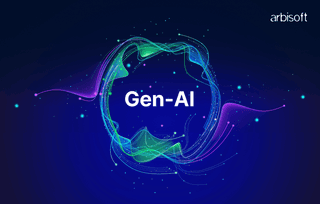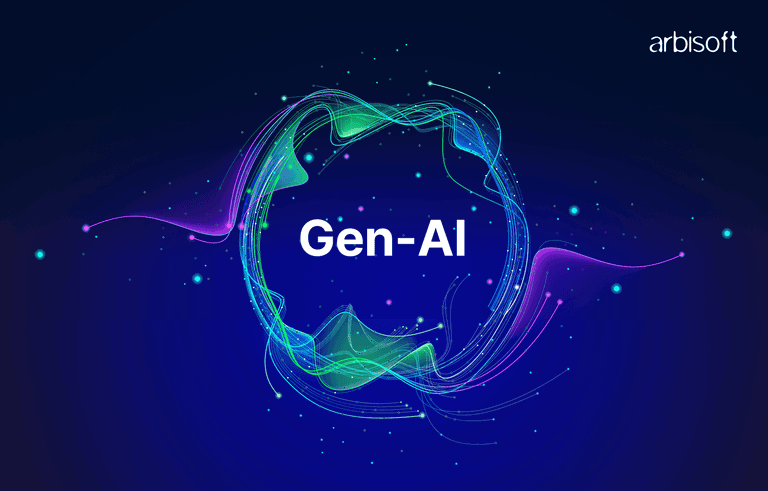We put excellence, value and quality above all - and it shows




A Technology Partnership That Goes Beyond Code

“Arbisoft has been my most trusted technology partner for now over 15 years. Arbisoft has very unique methods of recruiting and training, and the results demonstrate that. They have great teams, great positive attitudes and great communication.”
How to Migrate from Self-Managed Apache Spark Workloads to Databricks

In 2025, 74% of global enterprises have adopted the lakehouse model to consolidate disparate data systems, but 68% of organizations continue to struggle with the manageability of self-managed Apache Spark clusters. Spark continues to be a computing powerhouse, but its do-it-yourself implementations too frequently fall apart under today's requirements:
1. Cost Overruns:
Self-managed Spark clusters squander ~40% of the time of their engineers in tuning and maintaining their infrastructure, and 63% of organizations cite unexpected scaling expenses.
Databricks reduces the cost of computing by 50% with Photon Engine and auto-scaling, while its serverless SQL data warehouses give a 12x price/performance ratio compared to traditional data warehouses.
2. AI/ML Bottlenecks:
82% of data teams see Spark's fragmented tooling as a stumbling block to deploying AI models at scale. By contrast, Databricks users deliver ML pipelines 3x faster when built with built-in MLflow and Unity Catalog governance.
3. Performance Gaps:
Databricks SQL has been boosting BI workloads by 14%, ETL workflows by 9%, and exploration activities by 13% in a mere 5 months, and has been outperforming raw Spark in real-world benchmarks.
4. Governance Risks:
58% of organizations using DIY Spark experience compliance issues with manual security policies. Databricks’ Unity Catalog lowers governance overhead by 70% with automated lineage and role-based access control.
5. Strategic Impact:
Organizations moving to Databricks see a 480% return on investment on average, with payback times of only 4 months for AI workloads.
This guide isn’t just about upgrading your infrastructure—it’s about future-proofing your data strategy. We’ll dissect how Databricks’ Lakehouse Platform resolves Spark’s limitations with:
- Delta Lake: ACID compliance and 22% faster queries via Z-ordering.
- Photon Engine: Vectorized SQL execution for 12x speedups in mixed workloads.
- GenAI Integration: 40% faster analytics with natural-language BI tools like Genie.
Ready to escape the Spark treadmill? Let’s transform your data into a strategic asset.
From Apache Spark to the Lakehouse
Spark is an open-source tool that changed big data processing. It's great for tasks like cleaning data (ETL), machine learning, real-time data, and analysis. Over 80% of Fortune 500 companies use Spark, and more than 2,000 people contribute to its development. This shows how powerful and flexible it is.
However, managing your own Spark system comes with challenges:
- Time-Consuming Maintenance: Requires constant effort to manage clusters, install updates, and keep systems running.
- Performance Headaches: Needs expert skills to fine-tune for speed and efficiency.
- Scaling: Adding or reducing resources manually is slow and prone to errors.
- Security Hassles: Hard to control access, audit activity, and meet regulations in complex setups.
- Team Silos: Engineers, scientists, and analysts struggle to collaborate without shared tools.
Now, meet Databricks. It's a cloud-based data platform built by the original creators of Apache Spark. Databricks makes big data processing, AI/ML development, and data warehousing simpler. Databricks was valued at $62 billion in December 2024, showing its huge growth in the data and AI market.
The Databricks Lakehouse Platform brings together the best parts of data lakes and data warehouses. It offers:
- Reliability: Uses Delta Lake, an open-source storage layer that ensures data consistency and allows you to view past data versions.
- Performance: Features an optimized Spark engine, the Photon execution engine, and smart caching for faster data queries.
- Governance: Unity Catalog provides central data control, including detailed access rules and data tracking.
- Collaboration: Interactive notebooks, MLflow for managing AI projects, and easy connections with other business intelligence tools.
For many companies, moving from self-managed Spark to Databricks is a big step forward. It helps them speed up data projects and unlock new AI possibilities.
Why Make the Move? The Databricks Difference
Deciding to move from your own Spark setup to Databricks offers many benefits. These benefits solve the problems of managing traditional big data systems.
1. Less Operational Work
Databricks handles much of the technical work of running Spark:
- Automated Clusters: It creates, scales, and shuts down Spark clusters automatically. This reduces the need for manual setup. You can pick different compute options for interactive work, production jobs, or SQL analysis.
- Software Updates: Databricks manages Spark updates and security patches. You always get the latest features and fixes without lifting a finger.
- Simple Software Management: It makes managing software libraries across your clusters much easier.
This automation saves a lot of time and money for IT and data teams. They can focus on more important tasks.
2. Boosted Performance
Databricks improves Spark's speed with special optimizations:
- Photon Engine: This query engine makes Spark jobs much faster, often many times quicker. Photon is usually on by default with Databricks Runtime 9.1 LTS and newer.
- Delta Lake Optimizations: Delta Lake has features like Z-ordering, Liquid Clustering, and data skipping. These make queries on large datasets run faster. Liquid Clustering, for example, gives you the speed of a well-organized table without the manual work.
- Smart Tuning: Databricks automatically optimizes queries and how data is stored. This often happens without any manual effort. Predictive optimization, for Unity Catalog tables, automatically makes data run faster and cheaper.
These speed improvements mean quicker insights, lower computing costs, and the ability to handle more complex jobs.
3. Unified Data Governance with Unity Catalog
Managing data properly is crucial today. Databricks solves this with Unity Catalog. It's a single solution for all your data and AI assets across different clouds (AWS, Azure, Google Cloud). Key benefits include:
- Central Access Control: One place to manage who can access what data, down to specific columns. This ensures data security and compliance. It removes messy rules and simplifies access.
- Data Lineage: Automatically tracks how data transforms and where it's used. This gives you a full picture of data origins and changes, which is vital for audits and following rules.
- Data Discovery: Offers a searchable list of data assets. This makes data easier to find and helps teams work together better.
- Audit Logging: Provides full records of all data access and changes. This helps meet regulations like GDPR and CCPA.
Moving to Unity Catalog makes data governance smoother, reduces data breach risks, and improves compliance.
4. Simplified Data Reliability with Delta Lake
Delta Lake is at the heart of the Databricks Lakehouse. It makes data lakes reliable and fast. Its key features are:
- ACID Transactions: Ensures data is always consistent and correct, even when many users read and write at the same time. This makes data lakes suitable for important production systems.
- Schema Enforcement & Evolution: Stops bad data from entering your pipelines and allows changes to data structures without breaking anything.
- Time Travel: Lets you access past versions of your data. This is useful for debugging, audits, and undoing changes.
- Unified Batch and Streaming: Processes both large batches of data and real-time data using the same pipeline. This reduces complexity.
These features make Delta Lake a big step up from traditional data lakes. It offers the reliability of a data warehouse with the flexibility of a data lake.
5. Stronger Security and Compliance
Databricks has robust security features to protect sensitive data and meet compliance needs:
- End-to-End Encryption: Your data is encrypted whether it's stored or being moved.
- Role-Based Access Control (RBAC): Gives you detailed control over user permissions.
- Private Networking: Offers secure ways to connect and keep your data separate.
- Audit Trails: Provides detailed logs of all activities for monitoring and compliance.
- Compliance Certifications: Databricks meets many industry compliance standards (e.g., SOC 2, GDPR).
These security features create a much safer environment than managing security in your own Spark setup.
6. Faster AI and Machine Learning
Databricks offers a collaborative space built for AI and ML:
- MLflow Integration: An open-source platform to manage the entire machine learning process, from experiments to deployment.
- Databricks Runtime for ML: Optimized software with pre-installed machine learning libraries and tools.
- Feature Store: A central place to share and find machine learning features.
- Collaboration: Interactive notebooks support Python, R, Scala, and SQL, making teamwork seamless.
This complete ecosystem makes developing and deploying machine learning models at scale much simpler.
7. Better Cost Efficiency
Even though Databricks is a paid service, it can lead to major cost savings in the long run:
- Lower Operational Costs: Automation reduces the need for many people to manage infrastructure.
- Optimized Performance: Faster job execution means less computing time, leading to lower infrastructure costs.
- Serverless Options: Databricks offers serverless compute for jobs and SQL warehouses. You only pay for the actual compute used, eliminating costs for idle clusters.
- Spot Instance Use: Easily use cheaper spot instances for less critical workloads.
While there's an upfront service fee, the total cost of ownership (TCO) can be lower due to better operations and performance.
The Migration Journey
Moving from Spark to Databricks needs careful planning. Here is the structured approach that Databricks migration experts use for a smooth and successful transition:
Phase 1: Assess and Plan
- Define Your Goals: Be clear about what you want to achieve. Do you want faster performance, lower costs, better data control, or new AI features? Setting clear goals (e.g., "reduce data processing time by 30%") will guide your plan.
2. Understand Your Current Setup:
- All Your Workloads: List all Spark applications, data pipelines, AI models, and analysis queries. Group them by importance, complexity, and dependencies.
- Data Ins and Outs: Map all your data sources (like S3, ADLS, databases) and where data goes. Understand how much data you have, how fast it comes in, and its different types.
- Code Review: Look at your existing Spark code (Scala, Python, Java, SQL). Find any custom tools or specific settings that might need changes. There are tools to help with this.
- Security Rules: Document how you currently control data access and encryption.
- Current Performance: Collect data on your current cluster sizes and job runtimes. This gives you a baseline for comparing performance later.
3. Choose Your Migration Style:
- Lift-and-Shift: Move your existing Spark code to Databricks with minimal changes. This is the fastest way to start, but might not use all Databricks' best features. It's good for quick wins and getting rid of old systems.
- Refactor/Re-architect: Redesign and optimize your Spark code to fully use Databricks features like Delta Lake, Photon, and Delta Live Tables (DLT). This offers long-term benefits in speed, easier maintenance, and cost, but takes more effort.
- Hybrid Approach: A common way is to start by moving less critical jobs "as is," then gradually rework more complex or important pipelines.
4. Design Your New System:
Plan how your data will be set up in the Databricks Lakehouse. Consider:
- Delta Lake: How will your data be converted to Delta Lake format? This is key for data consistency and tracking changes.
- Unity Catalog: Plan your data governance using Unity Catalog, setting up data groups, schemas, and access rules.
- Compute Choices: Decide which Databricks compute types (interactive, job-specific, SQL analysis, DLT pipelines) are best for different workloads.
- Data Ingestion: How will new data get into Databricks? Think about Auto Loader for automatically bringing in new files from cloud storage.
Phase 2: Execute and Implement
1. Migrate Data:
- Old Data: For historical data, load it all into Delta Lake tables.
- New Data: Set up continuous pipelines using Auto Loader for new data coming into cloud storage.
- Transform Data: Adjust your existing data cleaning and shaping logic to use Databricks and Delta Lake features. Consider Delta Live Tables (DLT) for automated, reliable data pipelines with built-in data quality checks.
2. Migrate and Refactor Code:
- Convert to Notebooks: Turn your existing Spark scripts and jobs into Databricks notebooks.
- Language Compatibility: Make sure your code works if you use specific Spark tools or external software.
- Optimize for Databricks:
- Fix issues with too many small files using OPTIMIZE and auto-compaction.
- Re-think how your data is organized and use Z-ordering or Liquid Clustering for faster queries.
- Ensure your queries benefit from the Photon engine.
- For real-time data and complex transformations, consider rewriting pipelines using DLT for simpler management.
3. Implement Security and Governance:
- Deploy Unity Catalog: Set up Unity Catalog for central management of your data.
- Access Control: Move user and group permissions to Unity Catalog, setting up detailed access rules.
- Secret Management: Store sensitive passwords and keys securely using Databricks Secrets.
4. Test and Validate:
- Thorough Testing: Fully test all migrated pipelines and queries.
- Data Check: Compare data accuracy and completeness between your old and new systems (e.g., check row counts, totals, data quality).
- Performance Test: Compare how fast your migrated workloads run against your initial measurements. Run both systems at the same time for a while before fully switching over.
- User Testing: Have business users test the system to make sure it works as expected.
Phase 3: Optimize and Adopt After Migration
- Performance Tuning:
Keep monitoring and improving your Databricks environment.
- Cluster Sizing: Adjust cluster settings and automatic scaling to match your workload needs.
- Query Optimization: Analyze query plans and fix slow queries.
- Data Layout: Regularly run OPTIMIZE and consider ZORDER or Liquid Clustering for frequently used tables.
2. Cost Management:
Track your Databricks usage and control costs by:
- Right-sizing Clusters: Don't over-provision resources.
- Autoscaling: Use autoscaling effectively to reduce resources when not needed.
- Spot Instances: Use cheaper spot instances for less critical jobs.
- Serverless Compute: Use serverless options whenever possible.
3. Monitoring and Alerts: Set up comprehensive monitoring and alerts for pipeline health, performance, and resource usage.
4. Training and Knowledge Transfer:
- Documentation: Create detailed documentation for the new environment, pipelines, and best practices.
- Training: Provide hands-on training to data engineers, data scientists, and analysts on how to use Databricks notebooks, Delta Lake, Unity Catalog, and other platform features.
- Encourage Use: Help teams explore and use all the powerful features of Databricks.
Key Tips for a Successful Migration
- Go Step-by-Step: Don't try to move everything at once. Start with a small project or less critical workloads to gain experience.
- Use Automated Tools: Leverage Databricks' built-in tools like Auto Loader and DLT. Consider third-party tools to speed up parts of the migration.
- Prioritize Data Quality: Ensure data is clean and accurate throughout the entire migration process.
- Security First: Build security into every step of the migration, from access controls to data encryption.
- Teamwork: Make sure data engineering, data science, DevOps, and business teams work closely together. Assign a dedicated migration team.
- Get Expert Help: Use Databricks Professional Services or certified partners for expert guidance.
- Open Standards: Databricks supports open standards like Delta Lake, which gives you flexibility and avoids vendor lock-in.
Conclusion
Migrating to Databricks from Apache Spark isn't a matter of a technical upgrade but a competitive imperative for organizations to create modern, scalable, and AI-ready data platforms. Spark is a core tool, but the Lakehouse Platform by Databricks removes its operating friction and unlocks powerful benefits:
- Organizations achieve 40% faster deployment of pipelines and a 50% reduction in TCO by substituting Spark cluster management with serverless workflows from Databricks.
- Auto-scaling by itself saves idle compute costs by 35%, whereas Photon Engine speeds up SQL workloads 12x versus vanilla Spark.
- Databricks' Unity Catalog reduces governance overhead by 70%, and 90% of organizations become compliance-ready after 3 months of migration.
- Databricks MLflow enables teams to deploy models 3 times faster and lower training costs by 45% based on automated experiment tracking and GPU-optimized clusters.
- A 2024 study conducted by Forrester determined $6.4M in 3-year net benefits by organizations embracing Databricks, resulting from a 480% ROI powered by increased productivity and cloud savings.
With a phased migration approach—modernizing ETL pipelines with Delta Lake, bringing analytics together with Databricks SQL, and scaling AI with MLflow—companies can transform disjointed data silos into an all-encompassing source of innovation. The migration away from self-managed Spark to Databricks is not a platform shift; it’s a culture shift.
With data expanding exponentially and AI at the center of business strategy, moving to Databricks sets organizations up to unlock the full potential of their data. If you're working with legacy Spark pipelines or want to take your machine learning operations to the next level, a strategically planned move to Databricks can be a catalyst for innovation and productivity.
























